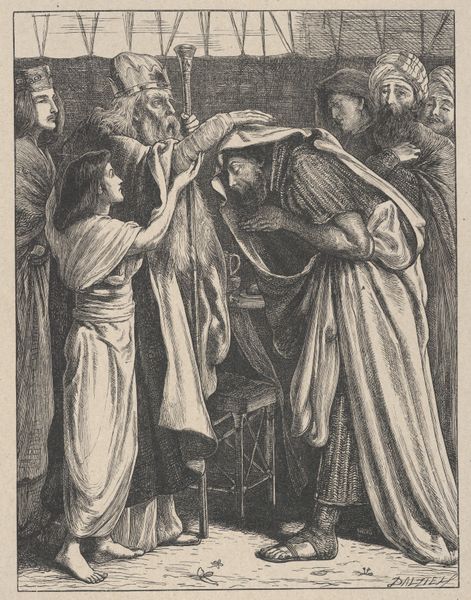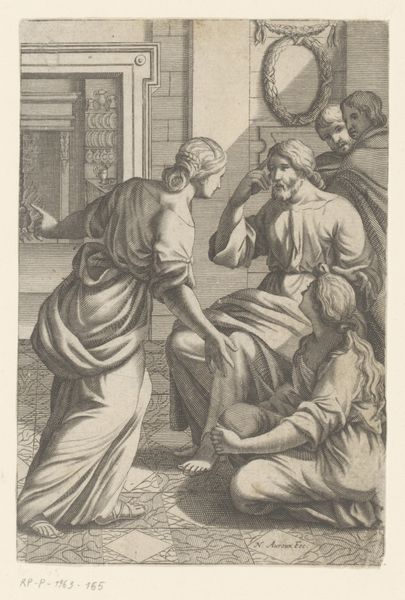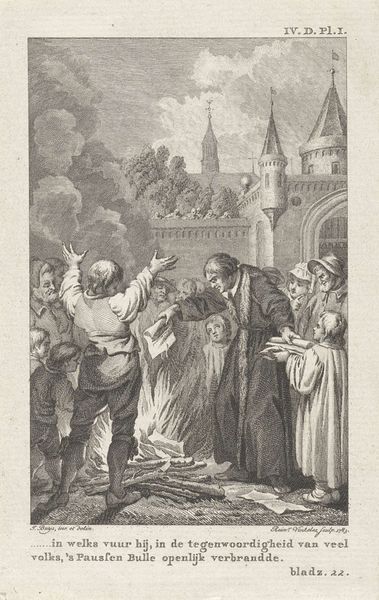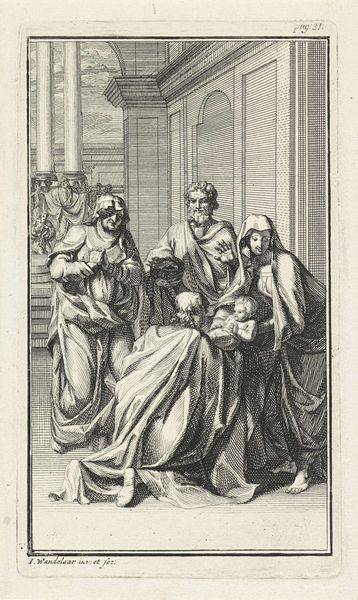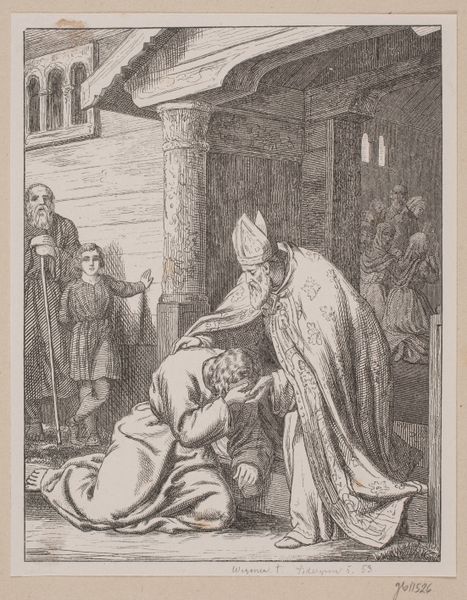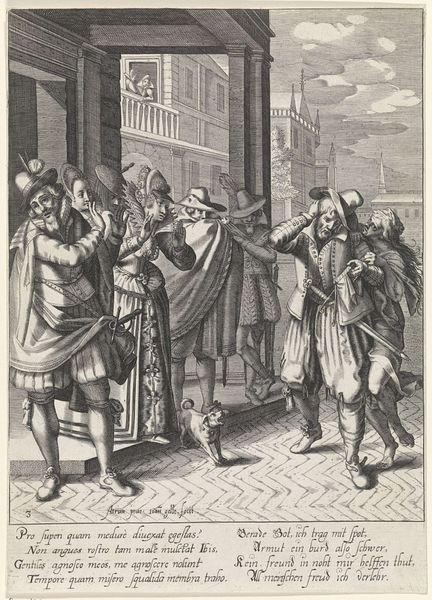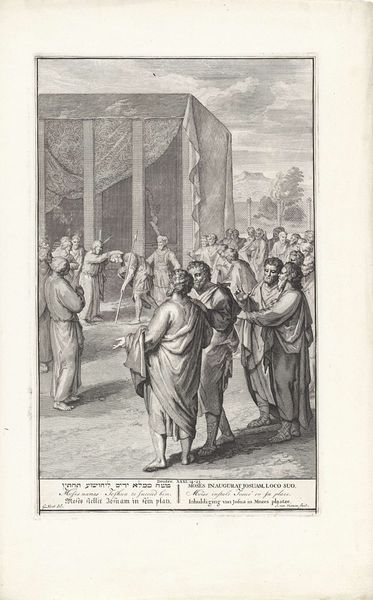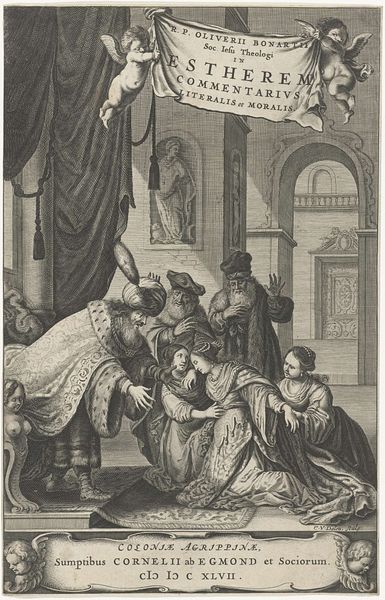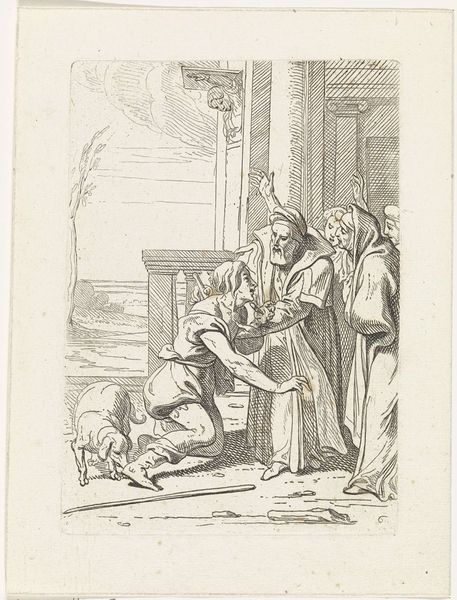
print, engraving
#
baroque
# print
#
figuration
#
history-painting
#
engraving
Dimensions: height 363 mm, width 223 mm
Copyright: Rijks Museum: Open Domain
Editor: We're looking at "Darius laat het graf van Nitocris openen," an engraving made around 1725 by Bernard Picart, currently residing in the Rijksmuseum. The scene feels very staged and theatrical, doesn’t it? Almost as if the figures are actors on a stage. What's your interpretation of this work, and what does it tell us about its context? Curator: Indeed, the theatricality speaks volumes. Consider the Enlightenment period's fascination with classical history and its use as moral instruction. Picart situates this scene – Darius opening Nitocris' tomb – within that framework. The image isn't just depicting an event; it’s performing a commentary on power, gender, and the act of transgression. Who gets to violate whose resting place and why? And more importantly, what commentary does this create on gender? Editor: So, you’re saying it's not just about history but also about power dynamics and potentially about anxieties around female authority in that era? Curator: Precisely! Nitocris, as a female ruler of Babylon, disrupts the patriarchal narratives. Darius's act of opening her tomb becomes symbolic of a desire to undermine or control that authority, even after death. Notice how the figures are positioned: the laborers forced to break the tomb, Darius pointing accusatorially... What narrative is being reinforced through these visual cues? Editor: It's like he's trying to expose or invalidate her somehow. I hadn’t thought about it in terms of challenging her legacy. Curator: Right. And think about the intended audience. Who was meant to view this image and absorb its message? What did the proliferation of such images mean for societal perceptions of female leadership and power in the 18th century? Editor: Seeing it that way really opens up the work. I came in thinking of it as just a historical scene, but it's far more loaded than I initially realized. Curator: Exactly. Art isn’t a neutral reflection, it's a participant in the cultural dialogues of its time, perpetuating or challenging existing ideologies.
Comments
No comments
Be the first to comment and join the conversation on the ultimate creative platform.
